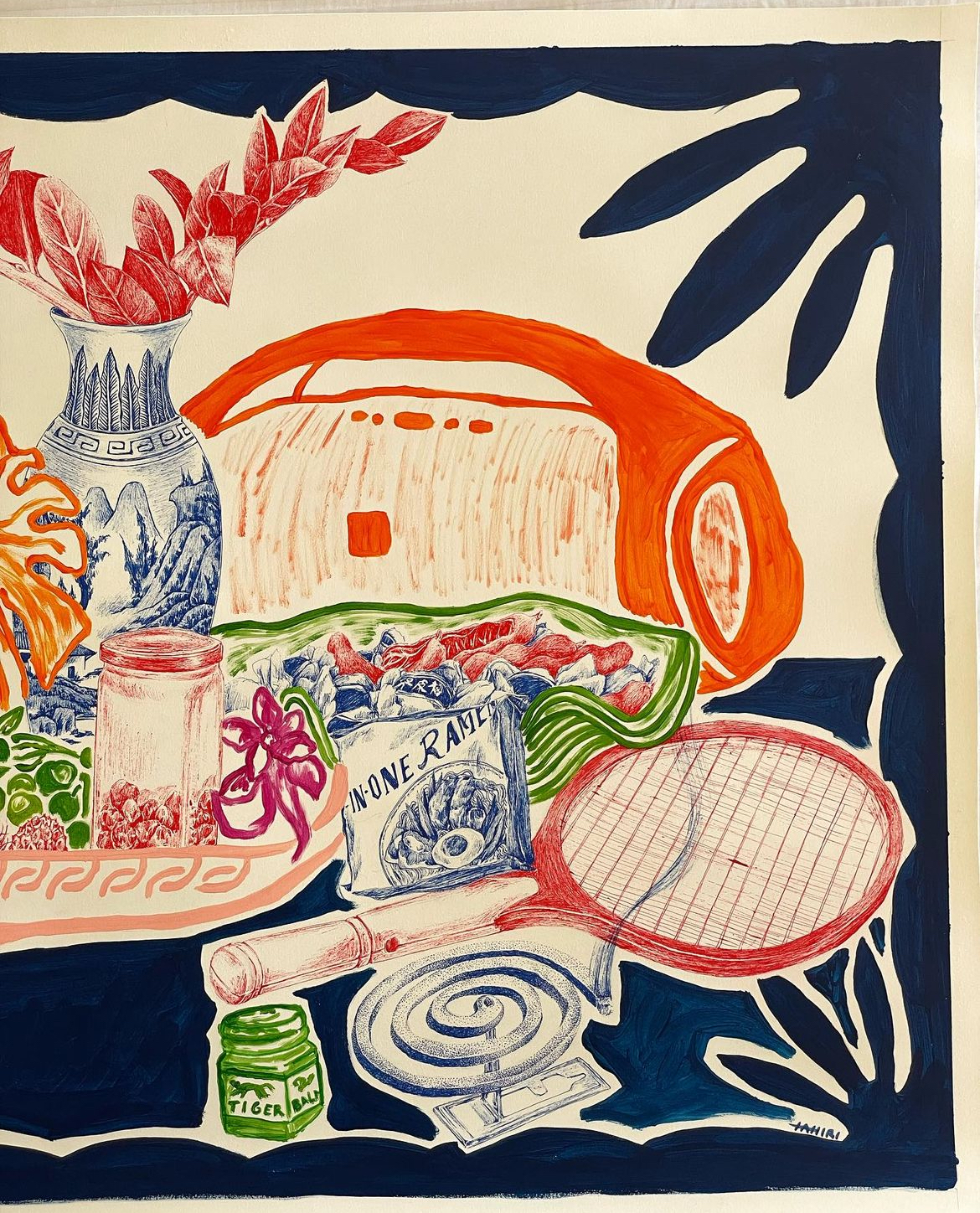Riding Tāhiri Sommer’s style!
Interview Tāhiri Sommer – 10-minute read.

The Eimeo brand is thrilled to introduce Tāhiri Sommer, a rising talent in contemporary Polynesian Art, as a featured collaborator. Renowned for his vibrant paintings and mixed media works that bridge tradition and modernity, Sommer has explored various artistic forms, including drawing, painting, collage and photography. His distinctive approach involves a special printing technique and patchwork of unique prints on textured canvas, resulting in bold compositions that challenge conventional representations of Polynesian identity. By intertwining traditional motifs with contemporary symbols, he invites viewers to engage with cultural narratives and authenticity. As part of our collaboration, our local artist is leading a trunk show at our boutique in Waikiki on September 18th, where his exclusive prints will be showcased. As he continues to develop his practice, Tāhiri Sommer is marking the Polynesian Modern Art, redefining the discourse around Polynesian heritage.
Evolution of the artist’s artistic style.

After completing his arts studies in Bordeaux in 2020, Tāhiri Sommer began exhibiting his photographs, gradually overcoming his initial shyness to showcase his paintings at the Winkler Gallery in May 2023. Influenced by artists like Matisse and Andy Warhol, he sought to create his unique style by exploring the Polynesian practice of Tifaifai. This journey led him to incorporate elements such as empty space, repeating motifs, a frame and a limited color palette of orange, blue, pink, and green into his work. By intentionally stepping away from traditional Tifaifai, Sommer developed a fresh approach that reinterprets stoic portraits and still lifes, drawing inspiration from historical Polynesian photography. His art reflects a constructed reality, allowing him to express a distinctive voice that honors his heritage while embracing contemporary influences—ultimately forging a unique representation that celebrates identity and challenges traditional norms.

Reinterpretation of Polynesian identity through Art.
The artist challenges misconceptions of Polynesian identity by contrasting historical portrayals with contemporary realities. Historical images of Tahitians, often staged for Western audiences, featured topless women in pareo and men with fruits, creating a false sense of authenticity. By infusing modern elements into their work, such as high-end bags or remote controls, the artist reclaims this narrative using humor and irony. He aims to reflect current Polynesian society, provoking thought on authenticity through disruptors like sandals placed in corners. One notable work titled “Mata’ita’i ia Netflix” features a Polynesian woman taking a lascive pose, draped in sheets with a remote control, highlighting the interplay between historical imagery and contemporary life, inviting deeper reflection on the evolving identity of Polynesian culture.

Playful creative process
Tāhiri Sommers emphasizes experimentation, observation, and flexibility in his creative process. He describes it as fluid and non-linear, often beginning with sketches of motifs—like hands, feet, or faces—without a clear direction. The choice of paper color is irrelevant, and he may later use digital tools like an iPad. Inspiration from his surroundings, such as women in pareos and vibrant colors in nature, helps shape his initial ideas into defined images. As his work evolves, he embraces digital experimentation for greater flexibility. For Tāhiri, this dynamic and sometimes chaotic approach is vital to his artistic journey, where uncertainty is welcomed as part of the creative process.

” If someone watches me work and says, ‘I don’t understand what you’re doing,’ that’s perfectly normal; I often don’t know what I’m doing at the beginning either. My inspiration generally comes from my immediate surroundings.”

Tāhiri Sommer’s work embodies his enthusiastic exploration of art, skillfully blending traditional references with modern elements. While he does not seek to convey a specific message, he aims to provoke curiosity and inspire viewers to question their perspectives, fostering a rich dialogue about cultural identity and evolution.
